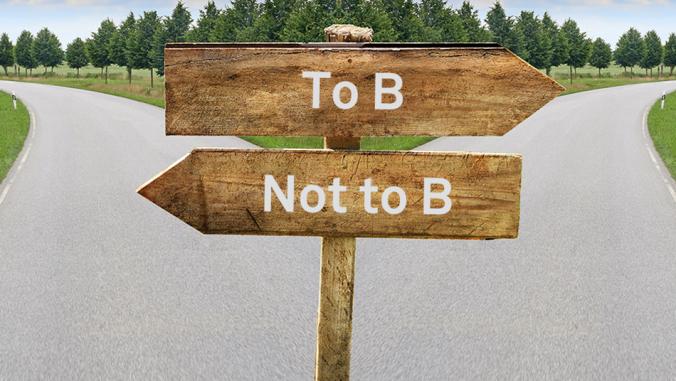The Technology that Could Save the Planet
<p>What if the technology we need to curb climate change turns out to be not a solar panel, smart grid or electric car battery but social media powered by cellphones, laptops and online networks like Facebook?</p>

What if the technology we need to curb climate change turns out to be not a solar panel, smart grid or electric car battery but social media powered by cellphones, laptops and online networks like Facebook?
As I prepared to leave yesterday for the climate negotiations in Copenhagen, I was struck by -- actually, flooded, overwhelmed, swamped and dizzied by -- the sheer volume of user-generated content coming out of Copenhagen, much of it created by people in their 20s and 30s.
Groups like 350.org and the Youth Climate Movement (”It’s getting hot in here”) and TckTckTck (”right now your leaders are deciding our future”).
It’s not just the kids, of course: Traditional NGOs are also blogging and tweeting like crazy from Copenhagen, as are the mainstream media (Juliet Elperin of The Washington Post is worth following on the Post Carbon blog), and even global companies are tapping into the power of social media to spread information. The real-time carbon counter below comes courtesy of Deutsche Bank’s Asset Management division; it was launched earlier this year in Times Square and now can be seen on blogs and websites around the world.
Of course, those who want to block climate regulation are using social media as well. The controversy known as ClimateGate has been fueled by conservative blogs (and of course it wouldn’t have been possible without stolen email). Here’s a tweet from Sarah Palin about her op-ed in The Washington Post.
Glad Wash.Post ran my Op-Ed on”Global Warming”Climategate scandal;amazing 2 see Al Gore’s denial of the controversy-its like denying gravity
Then again, Palin’s op-ed was immediately and devastatingly annotated by Mark Ambinder at The Atlantic and at Media Matters. Among her gems: “We can’t say with assurance that man’s activities cause weather changes.”) Again, I’m struck by how much of the political debate about climate change (and everything else) is moving away from print and onto the Internet.
{related_content}I called Jamie Henn of 350.org in Copenhagen (on Skype, of course) to ask him about social media at the climate talks. “There are probably thousands of bloggers here,” he told me, “and that doesn’t count the many more people at home who are following the events, reacting and spreading the world.” There’s no question that lots of people are paying attention. 350.org’s Facebook page has 66,000 fans.
The bigger and more important questions are (1) are all these words and pictures reaching beyond those who are already concerned about climate and (2) is all the blogging, twittering, Facebooking, etc., is leading people to do anything other than blog, twitter and spend more time on Facebook.
The 350.org people have thought a lot about both questions. Jon Warnow of 350.org shared an analysis with me that showed that during October, when 350.org organized more than 5,000 events in 181 countries–let those numbers sink in for a moment–the group dominated the environmental conversation online, generating more then twice the links than the combined total of the next five most popular environmental organization. Many came from bloggers who don’t ordinarily write about climate–a sign that the group is doing more than preaching to the converted.
What’s more, 350.org uses social media not just to share its message but as an organizing tool:
350.org recognizes that citizens around the world now have access to technology that allows for a revolution in grassroots organizing. When you can g-chat an organizer in Kenya, while Skype conferencing with allies in the Philippines, and SMS-blasting organizers across the United States, that opens up new possibilities.
When we heard that there was going to be a 15,000 person march in Ethiopia on October 24 and no one to film the event, our Africa Media Coordinator based in New York City Skyped a friend in South Africa, who called a friend in Ethiopia, who biked to the event, took photos and video, then biked to the only high speed internet connection at the one 3-star hotel in Addis Ababa, bought a drink at the bar so she could use their internet, uploaded footage to our online media library, and we got it to major news networks 3 hours later.
This weekend, 350.org is organizing candlelight vigils around the world designed to bring pressure on governments in Copenhagen to take strong action. This kind of mass action on behalf of climate change regulation is what’s needed, and there hasn’t been nearly enough of it until lately.
There’s obviously lots more to say about social media and climate, and I’ll keep my eyes out for stories once I get to Copenhagen. Meanwhile, a few interesting examples:
This brief video chronicles a protest outside the negotiations. What’s interesting is that there are as many digital cameras as protestors in the picture!
Below is the video sent to me (thanks, Ben Wessel) of young American activists disrupting a live webcast organized by Americans for Prosperity and featuring climate skeptic Lord Christopher Monckton. He called the students “crazed Hitler youth.”
Finally, there’s this short YouTube video from Andrew Revkin of The New York TImes, who’s not only a world-class reporter on the climate change issue but also creative when it comes to using images and video on his Dot Earth blog.
Note to self: Don’t forget to pack iPhone, Flip camera, digital tape recorder, batteries.
Click here for full coverage of COP15 from the GreenBiz.com and ClimateBiz.com teams, including posts from Copenhagen by Executive Editor Joel Makower and Senior Contributor Marc Gunther, and from dozens of guest contributors from the business world.
Image courtesy of 350.org.





